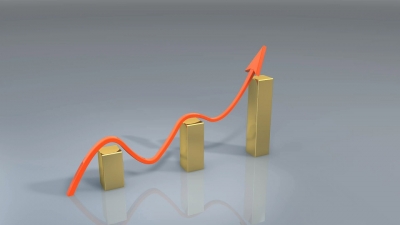The World Bank has raised its forecast for India's economic growth to the 7.5 to 12.5% range for 2021-22, which is a marked improvement over an earlier projection made in January this year, as there has been a rebound in consumption and investment and the vaccination drive against the coronavirus is in full swing.
"Given the significant uncertainty pertaining to both epidemiological and policy developments, real GDP growth for FY'22 can range from 7.5 to 12.5 percent, depending on how the ongoing vaccination campaign proceeds, whether new restrictions to mobility are required, and how quickly the world economy recovers," the World Bank’s 'South Asia Economic Focus’ report released on Wednesday states.
The World Bank in its ‘global economic prospects’ report released in January this year had projected India’s growth at 5.4% in for 2021-22. It had said the rebound from a low base is offset by muted private investment growth given financial sector weaknesses.
The report also forecast the economy to decline by 8.5 per cent in 2020-21 due to the pandemic. In its earlier report it had also expected GDP to contract by a sharper 9.6% in fiscal year 2020-21, due to drop in household spending and private investment.
“It is amazing how far India has come compared to a year ago. If you think a year ago, how deep the recession was. Unprecedented declines in activity of 30 to 40 percent. No clarity about vaccines and huge uncertainty about the disease. And then if you compare it now, India is bouncing back, has opened up many of the activities, started vaccination and is leading in the production of vaccination,” Hans Timmer, World Bank Chief Economist for the South Asia Region, said.
Over the medium-term, growth is projected to stabilise within a 6-7 percent range. The report said public consumption will contribute positively, but pent-up private demand is expected to fade by the end of 2021. Investment will pick up gradually, spurred by a large government capital expenditure push.
According to the report, negative spillovers from financial sector distress, especially as forbearance measures expire, remain a risk to the growth outlook. Nonetheless, the Reserve Bank of India’s liquidity stance is also expected to remain accommodative during the fiscal year ending in March 2022.
As economic activity normalizes, domestically and in key export markets, India's current account is expected to return to mild deficits (around one per cent in FY22 and FY23) and capital inflows to be buoyed by continued accommodative monetary policy and abundant international liquidity conditions, the report observes.
The shock from Covid-19 will lead to a long-lasting inflexion in India’s fiscal trajectory. "The general government deficit is expected to remain above 10 per cent of GDP until FY'22. As a result, public debt is projected to peak at almost 90 per cent of GDP in FY'21 before declining gradually thereafter," the report states.
As growth resumes and the labour market prospects improve, poverty reduction is expected to return to its pre-pandemic trajectory, the report adds.




















